Francesco PRIMAVERA, the voice of roaring charm
- Elisa Nori

- May 27, 2022
- 20 min read
The meeting between me and Francesco Primavera took place in his hometown and also the capital of Italian cinema, that is Rome. We started interacting and acting on the set of an embryonic project of mine called Henty and from there a friendship started, which has binded us for fourteen years.
After being chosen by me for one of the roles in the short film Anima & Animus, shot for the National Academy of Cinema in Bologna, he supported me in selecting the actresses I needed to close the casting circle.
Francesco's professionalism and seriousness at work are undoubted, also given by his experience and by the unfailing ability to always get involved.
The decisive and resolute character of him, which transpires in particular from the look but also from the stage presence, fits well above all in Thriller / Action or Crime / Police.
Personally, I would easily see Francesco in the role of the Tony Montana criminal in Scarface by Brian De Palma, a film that with its pinstripes, open shirts and collars always on the outside has entered among the memorable, or in a character like the investigator J.J. Gittes in Chinatown by Roman Polański, where the three-piece suits from tweed to pinstripe to immaculate white, make it an example of good taste and class.
Knowing Francesco's nature and temperament, I can't help but think of a Marlon Brando, the Hollywood rebel, who with a chameleonic style from Jeans, white T-Shirt and leather jacket (made the leather jacket a must for young people), he could easily switch to a buttoned jacket with peak lapel, grease in his hair and a tight tie knot.
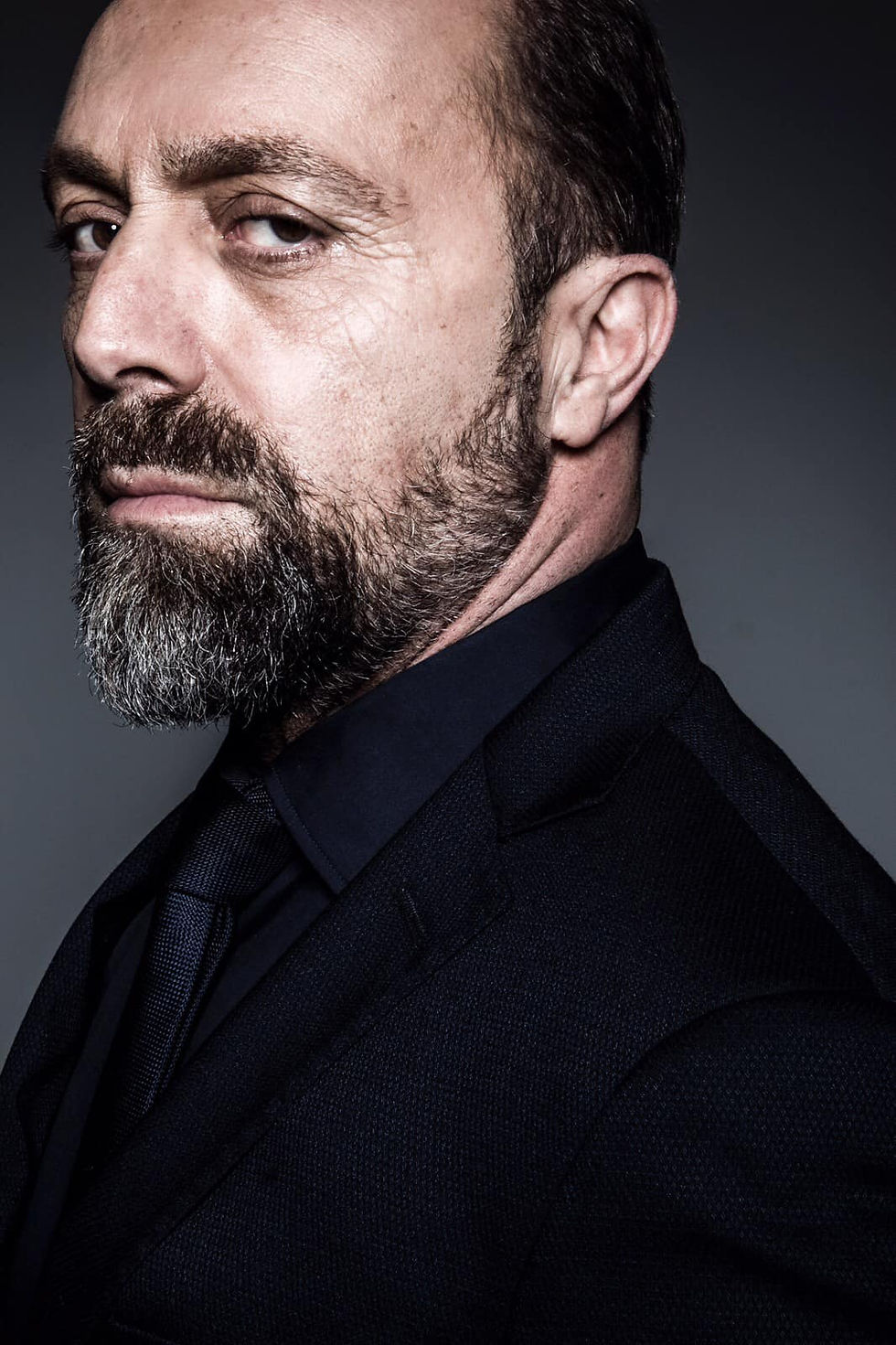

If, on the other hand, I had to mention Italian actors who surely Francesco is inspired by when he wants to bring out the most homegrown side of life, with its imperfections and also peculiarities, re-proposing a context typical of his land ... the names that immediately emerge in my mind are those of Vittorio De Sica, Alberto Sordi and Gigi Proietti.
In the neighborhood where Francesco was born and still lives, between Valmelaina and Tufello, just behind his house Vittorio De Sica toured Bicycle Thieves.
That scene was re-proposed as a director by Francesco, in black and white with the same shots, in the web series God makes them then puts them together.
This attracted the attention of Unomattina, who dedicated a beautiful service in which he proposed alternating images of the original scene, with the scene that Francesco had shot. Gigi Proietti lived in the same neighborhood for a long time, absorbing all the ways of the popular Roman from the context itself, re-proposing them in his art and in his performances. After his death a mural was painted on one of the buildings in memory of the person and the artist who lived in him.
Returning to Francesco's acting, his image is also suitable for historical films, where his features are highly interesting to give life to a general, a leader or a captain; real actors owe everything to their facial expressions, facial features and facial expressions.
In the fantasy genre it can very well approach it by taking on the role of the brave and intrepid warrior, or on the contrary a wiser and enlightened figure, exploiting its expressive capacity which is often required in longer intervals of speech.
We know that piercing the room, even just with the look, is not the virtue of any actor.
I bet on him without a shadow of a doubt, because he is skilled and prepared to excel in roles that are very different from each other, in my case for a drama / fantasy genre.
He can appear rude and aggressive if imposed by the script, but he also knows how to transform himself into his opposite if necessary, bringing out the comic and sarcastic side of him or using serious, reflective, sad tones where a dramatic genre requires it.
I immediately perceived that he was perfect in the role that I had to entrust to him; I had no hesitation or change of opinion, I would have accepted someone else.
Versatility is an extremely important gift and Francesco, beyond this, boasts and amplifies his skill through a strong and captivating voice, perfected through years of work with dubbing, similar to that of the great Luca Ward.
Directing him remains pleasant and extremely immediate, being that the concentration he invests is maximum. When he works, he knows that he is there to do what he loves most and to play the part in the best possible way, so that the director can get the desired result.
Combined these two components, we obtain a Francesco with great charisma and charm who can play more modern characters, to the point of playing roles of other eras without any effort, if not that of dedication and passion.
Precisely because they are often dominant, male figures in cinema also need the support of a fashion that communicates and increases all the behavioral and social characteristics of the individuals they are going to represent.
It is therefore wrong to associate fashion as a feminine exclusivity, indeed ... over time the majority of men have become more and more well-groomed, some of the real narcissists.
There is an even more meticulous request and demands but less rigid canons than in the past, even if refined, elegant and good-looking men were not lacking looking back.
As the greatest inspiration for contemporary fashion, Renaissance paintings, classical statues, photography and cinema abound that meet and unite with it, in an embrace of creativity and uniqueness.
Right now, you want for a society with different ideas and equally varied contexts, fashion surrounds more genres that live in the light of the sun, rather than hiding as often happened in the past, also creating a concept of feminine and masculine amalgamated but at the same time free. from preconceptions and impositions, not necessarily divided into watertight compartments.
However, fashion has always fought to keep its rebellious and nonconformist nature, proposing an art one step ahead of what would later come.
There are masculine looks in cinema that have made history and influenced entire generations. Just think of Paul Schrader's American Gigolò, where Richard Gere exhibits a wardrobe that, impressed in the minds of many people, becomes an authentic international launch of Armani's ready-to-wear line.
The Great Gatsby also becomes an inspiration, whether it's the version of Jack Clayton with Robert Redford or the more recent version of Baz Luhrmann with Leonardo DiCaprio.
In 1974 the dresses were designed by Ralph Lauren and in 2013 by Miuccia Prada and Brooks Brothers.
Jacket, trousers and vest make history and the white cocktail suit with yellow tie
but also the pink cotton suit with handkerchief in the pocket becomes an emblem, a symbol of elegance.
We also remember 007 Skyfall by Sam Mendes, where Daniel Craig wears Tom Ford designer clothes. Whether it's a smocking or a more casual look, Bond exudes confidence and ease and it is precisely by thinking about the most unlikely situations and stunts that the actor would have encountered in the film, that the designer has consequently produced the clothes.
Unforgettable John Badham's Saturday Night Fever where glitter, flared trousers and narrow waist, mega-collared shirts marked an era; many men have dreamed of being Tony Manero at least once, and some have sported a decidedly daring and eccentric disco look, as the fashion of the time called doing.
In the same vein, Grease, which even after many years continues to strike, inspiring fashions and trends even in the most recent generations.
Jeans, leather aviator jacket and Ray Ban glasses set the law in Tony Scott's Top Gun,
while the “murderers with style” of Pulp fiction and Le Iene, by Quentin Tarantino, break it.
We have the greatest example of cinema and fashion with A Single Man and Animali Notturni with director Tom Ford, where the male figure is questioned and the impeccable attention to detail and clothing is not lacking. The costume designer of Nocturnal Animals is Arianne Phillips who has worked on other famous films including The Crow which, thanks to the protagonist and her look, has given life to darker male characters.
Returning to Italy and more precisely to Rome, which has always been a favorite of directors, I cannot avoid mentioning a few titles of the many masterpieces made entirely or in part within it, which have also made a difference for the clothes and costumes.
It contains priceless historical and artistic treasures and it is in this city that the first studio dedicated to the film industry, Cinecittà, saw the light.
How can we forget Federico Fellini's La Dolce Vita, where the bathroom of the beautiful actress Anita Ekberg in the Trevi Fountain made it an indelible, iconic place.
Thanks to that scene, which remained etched in the history of cinema, the Roman monument becomes the stage subsequently recreated by many others, even if no imitation could or could equal the original scene.
Other places traveled by Fellini in his film are Via Veneto, Parco degli Acquedotti, the Baths of Caracalla, Piazza di San Pietro, Palazzo del Quirinale, Piazza del Popolo, the Church of San Giovanni Bosco ... up to the more neighboring areas. such as the Villa Giustiniani Odescalchi in Bassano di Sutri, also used by directors such as Roberto Rossellini and Luchino Visconti; we then end with the final scene on the beach of Passoscuro, on the Roman coast.
The dark two-button suit worn with a white shirt and thin black tie and the final white suit worn with a black shirt made Marcello Mastroianni the symbol of Italianity and elegance; the Italian tailoring tradition, celebrated by the various brands, through men like him boasts a very clear point of reference.
Piero Gherardi, renowned set designer and costume designer, architect and interior designer by profession, marked an era of cinema with his costumes as well as being one of Fellini's spearheads. This is to underline once again how fashion is also linked to architecture in a significant way and influences every sector, inspiring it. Gherardi was nominated six times for the Oscar and won it the first time in 1962 with La dolce vita and the second in 1964 with Otto e mezzo.
Let's move on to William Wyler's Roman Holiday with Audrey Hepburn and Gregory Peck aboard the Vespa myth, which thus consecrated his fame.
Cinema is divine because it is a window of infinite visibility and opportunities, which has allowed many to get to where they are now and still allows it if they are endowed with skills, perseverance and talent.
Here we see Palazzo Brancaccio, Palazzo Barberini, Piazza della Repubblica with the Fountain of the Naiads, the Roman Forum, the Colosseum, Piazza di Spagna, the Altare della Patria, Castel Sant’Angelo and the famous Bocca della Verità.
Audrey Hepburn did not have a garment made for the red carpet of the Oscars but for the occasion, she asked Hubert de Givenchy to modify the white lace dress designed and made by costume designer Edith Head: thus a movie star and a diva were born. of 50s fashion.
The dress was renamed "lucky dress" for the victory, while Time elected it as one of the most beautiful garments seen on the red carpet of the Academy Awards.
Gregory Peck, on the other hand, elegant or less formal, had the merit of knowing how to wear any dress, thanks to what was defined as a refined and unique "aura".
Another film that has made the history of Italian cinema and which has won, among others, the prize for the best costumes is Il marchese del Grillo by Mario Monicelli. Although many scenes were shot in various cities or reconstructed in Cinecittà, it offers an incredible insight into Papal Rome. Costume designer Gianna Gissi and the collaboration of Bruna Parmesan allowed this film to be consecrated also for what the actors and actresses wore.
In more than 80 years of activity, Cinecittà has hosted not only the best Italian films but also the filming of great masterpieces of world cinema.
“The dream factory”, so called for its fruitful and productive activity, has also allowed us to shoot many colossals, such as Ben-Hur, who in 1960 won 11 Oscars or Cleopatra, Quo Vadis, The Godfather.
Other films made within it were: Amarcord and I vitelloni by Federico Fellini, Bellissima by Luchino Visconti, The Adventures of the Baron of Münchhausen by Terry Gilliam, The Gladiator by Ridley Scott, Angels and Demons by Ron Howard, Oceans 11 by Steven Soderbergh, The legend of the pianist on the ocean by Giuseppe Tornatore, Gangs of New York by Martin Scorsese.
From Rome, the capital of Italian cinematographic talent and the city of Francesco, we begin with pride and admiration to tackle his biography, and then with a feline leap go on to deepen with him the indomitable essence of him, through the interview.
Francesco Primavera is an actor, director, voice actor, speaker, author, teacher.
He attended a course in diction, acting and dubbing, and various advanced stages, then made his debut as an actor in various theatrical performances in the early 90s. After a brief experience as a speaker in a Roman radio station, he returned to the theater as an actor and director , creating his own Theater Company. Since 1997 he alternates his theatrical activity with the Cabaret, founding the comic duo "Primavera & Mannozzi", performing in national clubs and participating in various television broadcasts, including Laboratorio 5 on Canale 5.
The duo ends its activity in 2003. In the early 2000s it begins its activity as a voice actor and speaker and participates as an actor in short films, winners of prestigious national awards. At the same time he began teaching theatrical courses and created the Cinematography Course in a school in Rome, writing, directing and editing short films that won various national and international awards. In 2007 he made his debut in the cinema acting in English in an international film, Nympha, and in the same year he participated in TV series such as Incantesimo and I Cesaroni.
Among the TV series in which he participated later we remember La ladra, Tutti Insieme Sudden and Speravo de morì prima.
Films include Ganja Fiction, Long Live Italy, A Question of Karma, Pure Hearts, Sex Sick, Return to Crime, Ice and in post production The Prince of Rome.
In 2017 he was among the protagonists of a corporate spot on the 25th anniversary of the D.I.A. broadcast on national networks and networks. He also participated as an actor in various video clips, including In Paradiso by Achille Lauro.
As a director he has directed and starred in various web series, among which God makes them then assembles them, with non-professional actors, series that aroused the national attention of Unomattina on Raiuno.
Again as director he directed the short films La carne non è acqua and Shakespeare in Rome, of which he then developed the screenplay for a feature film that is still looking for production.
His latest works as an actor are the short film Anima & Animus and the independent film Il bradipo, currently in post production.

If I had to compare Francesco to an animal, I would compare him to a proud feline, who knows when and how to act, maintaining that pride and that majesty that distinguishes him.
This fascination with him brings him in front of the room, and it is his gaze that suggests a thousand facets of his being and that allows him the most exciting and profound interpretations.
But now I will go into a forest or savannah, as you like to think of a brave and powerful lion, letting myself be guided by the unmistakable roar and then admire this beloved and feared king more closely.
Francesco, you know that fashion is constantly changing, it often comes and goes reinterpreting elements that have entered daily life and habits. He reinvents the right formula to brush up or revive something from the past to then propose it in the present time, or fantasize future scenarios that can leave room for the imagination and the unknown.
How do you experience fashion and how have you seen it change in your career and life?
My relationship with fashion, understood as a trend or mood, to be adopted according to the period, is almost non-existent. As a nonconformist, I have always chosen based on my personal tastes. I am also fascinated by "vintage" elements, from the 50s to the 90s.
I generally prefer “casual” clothing: jeans, t-shirt or shirt, jacket and sneakers.
I have to feel comfortable, not forced into a suit.
For example, the tie is an accessory that I rarely use, except in specific cases or when required for a role. In the preparation of a character, on the other hand, I am very attentive to details and I try to be in line with the fashion of the historical period, but above all with the personality of the character that I am going to interpret.
The films that particularly impressed you for the care of the clothes; which costume designers do you think are unforgettable compared to others and valid in their productions?
I cannot fail to mention my favorite film first: "Once Upon a Time in America", for the attention to detail and costumes of the time.
Then by heart, I can mention elements that have become iconic.
Marlon Brando's leather jacket in "The Wild", James Dean's jeans in "Burnt Youth", Dennis Hopper's boots and fringed jacket in "Easy Rider", Terence Hill's scruffy look in the memorable "They called him Trinity", but also the Armani designer clothes by Richard Gere in "American Gigolò", the 80s sleeveless down jacket by Michael J. Fox in "Back to the future" and the Nike "self lacing" ones in the second chapter of the saga that have become objects of desire for a generation.
What were the sets of short films / films or theatrical performances that saw you distort your appearance and which do you remember with the most pleasure? Are there any clothes that have stood out the most?
At the theater I had a lot of fun playing Pick, an unlikely detective who was passionate about disguises but who was always recognized and unmasked on a regular basis. The show was “Fortunately, it's a moonlit night” and it was my directorial debut. In Feydeau's "The flea in the ear" I was engaged in the dual role of an insurer and his double hotel attendant; I had very fast changes in which I left the stage and returned from the opposite fifth transformed.
I honed this ability to transformism during the Cabaret period with the duo Primavera & Mannozzi, with whom we staged a series of sketches with many characters and very fast disguises.
In cinema and fiction I have loved to play the role of historical characters, such as Vitruvius Pollione or Nerone.
I also had a lot of fun playing the parody of the "Lebanese" in "Avanzo Criminale".
Among the male characters in the world of cinema, which do you consider as a reference for their style and for what they have transmitted through it?
As for my personal tastes besides the aforementioned Marlon Brando and James Dean, I'd say Steve McQueen and Johnny Depp.
More generally, if I have to think about “style”, the old Hollywood myths Clark Gable and Gary Cooper, more recently Marcello Mastroianni and Sean Connery, and currently Leonardo Di Caprio and Brad Pitt come to mind.
How much do you think it matters for the male figure to have an appearance that represents even more the character he plays? How much does it affect the product and the final yield?
Appearance is fundamental ... and it's not just about the dress you wear.
It is necessary to be physically credible, in the posture, in the facial expressions, in those small details that sometimes emerge almost spontaneously in the construction of the character.
Consequently, to answer your question, all these aspects have a decisive impact on the product and on the final yield.
Cinema is a remarkable showcase of visibility and that is why stylists use the most important ceremonies and the image of stars to make them shine. Through this exchange, fashion makes its creations and aesthetic sense known, while the actors and actresses celebrate their notoriety and their skill by allowing themselves to be empowered through the art they wear. This pairing is exceptional and works superbly. Would you like to be dressed by some stylist? If so, by whom? Which ones do you like most?
Of course I'd love to! Who would not like to be dressed by a great designer and wear the dress casually on the red carpet? The top would be Giorgio Armani, but also Valentino and Versace, in short, the crème de la crème of Italian excellence.
Francesco, you have often talked to me about great directors, especially from the Italian Neorealist period ... The skin above all counted, in which the soul of the actor and actress were dressed ... but above all the digging beneath it ... The grandiose the rise of many took place precisely because they were able to interpret tangible and everyday realities, with an ardent use of emotions that would, with all respect, go beyond any dress. We can therefore say that any item of clothing or accessory comes to life thanks to the wearer, but above all to what he has to give to others ... otherwise we would be just mannequins. On this thought I ask you to express what in your opinion has improved or on the contrary worsened with the often obsessive care of appearance ... Do you think that the substance has somehow vanished ... or do you believe that like all eras, there are different values and therefore a way of dealing with life that is a consequence of it?
The period of neorealism in Italian cinema is a point of reference for almost all the great contemporary world directors; anyone who wants to bring to the screen a story that takes its cue from reality or from real events cannot fail to take inspiration from that great school.
When the viewer is so involved in the narration of the film that they forget that the characters are actually actors, the credit is due to the teaching that the great masters of neorealism have left us.
In that case, Cinema fulfills its most important task: to transport us to a parallel reality. This obviously can also be applied to films of different genres.
In this case it is the actors, with their soul, who give life to characters with whom we immediately empathize. While in neorealism often the actors were taken directly from the street (and later this gave rise to many extraordinary character actors), today it is the technique and, precisely, the soul of those who play a character with extreme naturalness to give the same results.
The differences between yesterday and today are many, I would not speak of improvement or worsening ... It is the reality and the historical context that have changed, in addition to society and interpersonal relationships.
Aesthetics has assumed a predominant importance in all fields, so the risk that this involves less attention to the "substance" is real and tangible.
In the cinema scene there are always those who have been more vain and some less, given precisely by their personality or by different life experiences that lead to adopting habits not similar to those of another ... In the end, remember to take care of oneself is important. Many artists sinned on this, especially those who did not tend to be in front of the camera, but behind ... Others, while standing in front of us, had a thousand excesses also given by their egocentrism, their restless genius, their continuous search for something that made them feel alive ... Based on this as I asked your colleagues, on the set of Anima & Animus, Giulia and Eleonora ... often adopting more masks, more personalities in the entire acting career can make you lose your way and yourself … How do you manage to stay centered, remembering yourself and keeping a balance? What do you recommend to those who want to take this path which is often also in part easy to lose balance and harmony, both due to the pressures to which they are subjected, but also to the continuous and exhausting search for perfection?
Passion for me is the fundamental element. Obviously it is not enough ... there must be a natural predisposition and what is normally called talent.
These are all elements, which cannot be taught or learned.
In some cases the passion can be transmitted; then there is the technique.
Always study and as Eduardo De Filippo said "exams never end".
Furthermore, reading, observing, going to the theater and cinema is of fundamental importance.
Having as many elements as possible available to then create your own style, your own uniqueness. In the history of cinema, there have been extremely talented actors and actresses who have pushed the limits for reasons that must be sought in the biography of each of them and which have left us with memorable interpretations. As for the identification with the various characters who are interpreted, each one follows his own method. I always try to maintain the right balance between technical control and emotional flow, this allows me to abandon the role as if it were a dress to put away in the closet. Probably the experience in both positions also helps me: in front of and behind the camera. Some, on the other hand, have difficulties and often struggle to get rid of it. I think it depends on the type of approach and working method you use. The pursuit of perfection risks becoming an obsession, if we do not realize that we are chasing a chimera.
You can only try to give your best and put all your effort into it. And have fun… that the joy of creating, feeling and transmitting emotions is a privilege to be always grateful for.
Future projects and expectations of Francesco both from a professional and a private point of view… Dreams that knock and paw from the drawer?
I have just finished shooting “Il Bradipo”, an independent film starring with a team of promising young people and I'm waiting to see the result; a character that I loved a lot and who gave me the opportunity to express many different emotional nuances.
Then there is the film I wrote, my first screenplay, a long gestation born about seven years ago. A choral comedy that is a declaration of love to the actors, to the theater, to my city of Rome and to Shakespeare. I am looking for a production and I hope to have the chance to make this dream come true as an actor, director and screenwriter.
I conclude with a question that I have not formulated for your other colleagues, because it differs in part from the main topic ... even though I know perfectly well what they think ... Anima & Animus without anticipating anything ... How much did you like playing the character? Fantasy, whether it is more dramatic or not, is one of the greatest examples of how costuming is essential and decisive. Are you excited about the idea of soon putting yourself in the same shoes and who knows maybe for a feature film?
Every time I have to approach a new character, I need to find the key to empathize, find that compromise between the needs of the script and that part of me that can best adapt to making the interpretation as credible as possible. With Raffaele it was all very “fluid”.
It happens when the writer of the screenplay already has in mind the actor who will have to give life to a certain character. These complex and mysterious characters excite me, because they give me the opportunity to experiment. Raffaele is a "meta-character"; real but at the same time dreamlike, profound as a representation of the unconscious but also of the superconscious, with ancient wisdom and a ruthlessness that is an expression of truth.
I was thrilled to take on this new challenge in the short film and I hope to be able to give Raffaele more depth and nuance should the feature film be made.

Francesco's words roar of authenticity, of a feeling linked to knowing how to recognize and know everyday life, but nevertheless to be able to go beyond it, to overcome limits and achieve one's dreams.
Francesco is a simple man but at the same time with a very complex inner part, like all artists who do not just show themselves, they possess.
His generation is not satisfied with the surface, but on the contrary comes from a deeply rooted and passionate way of conceiving acting, which must leave its mark.
Rebellious and not very inclined to orders, preferring more an equal relationship made up of advice and suggestions, he feels the absolute need to bring this component also on the set, the same component that helps him in his roles where inviolable dignity is king.
That substance of which Francis himself speaks is none other than the soul that he dresses before the appearance, it is none other than the emotion before the surface.
Those who come from the theater like him, have a completely different and decidedly more complete preparation and setting than many, who often think that theater is extremely different from cinema. Yes, the ways of acting differ and it is true that many have had to learn to contain rather than let it flow in a too blatant way ... but the richness of detail brings the advantage of knowing how to convey pathos and play with a mimic that in certain contexts, even if less contained, made the difference for many great actors. Obviously everything depends on the role, but surely in the theater if you make a mistake ... there is no possibility to discard and turn around.
The responsibility is greater and the control of the body and the management of emotions becomes doubly more difficult.
The audience is there, ready with its immediate judgment at the end of the show and there is no escape from thunderous applause or on the contrary, from whistles and feeble enthusiasm.
Certainly Francesco knows sacrifice and dedication very well, because he has achieved everything he has achieved with love for his work.
His gaze and his voice are a perfect alter ego, the same reason I chose him for one of the roles in my short film Anima & Animus.
I strongly believe in the importance of individual details, of the individual strengths of an actor, because they are what make him different from hundreds of others.
To emerge you have to be different, you have to have the courage to be, and Francesco does not lack this.
Vittorio De Sica was a revolutionary because he "ironically shaped the sad elements of society"; here is the affinity felt by Francis. Considered one of the fathers of neorealism, he left masterpieces such as the aforementioned Bicycle Thieves, Sciuscià, Miracolo a Milano, Umberto D., La ciociara, Yesterday, today, tomorrow ... How no wonder he is a great admirer of Gigi Proietti, who passed away a couple of years ago but manages to remain indelible, through his work ... considering that in his dubbing career he boasts actors such as Ian McKellen, Robert De Niro, Sylvester Stallone, Dustin Hoffman, Kirk Douglas, Marlon Brando, Rock Hudson, Paul Newman, Sean Connery, Kevin Costner, Gregory Peck, Charlton Heston to name a few.
Actor and theater director, film actor, writer, poet, singer ... He represented the completeness that artists once had to possess. Perhaps today we are less rigid about this, but surely the difference can be seen and heard, at least in Italy.
An indomitable and ungovernable soul can only want to discover new places, new adventures and new opportunities.
I wish Francesco to contribute for a long time to keeping this wonderful world that is cinema alive, to be able to tell what is essential and vital for him, because each of us needs to express himself and express himself to others.
"We are all connected in the great circle of life."
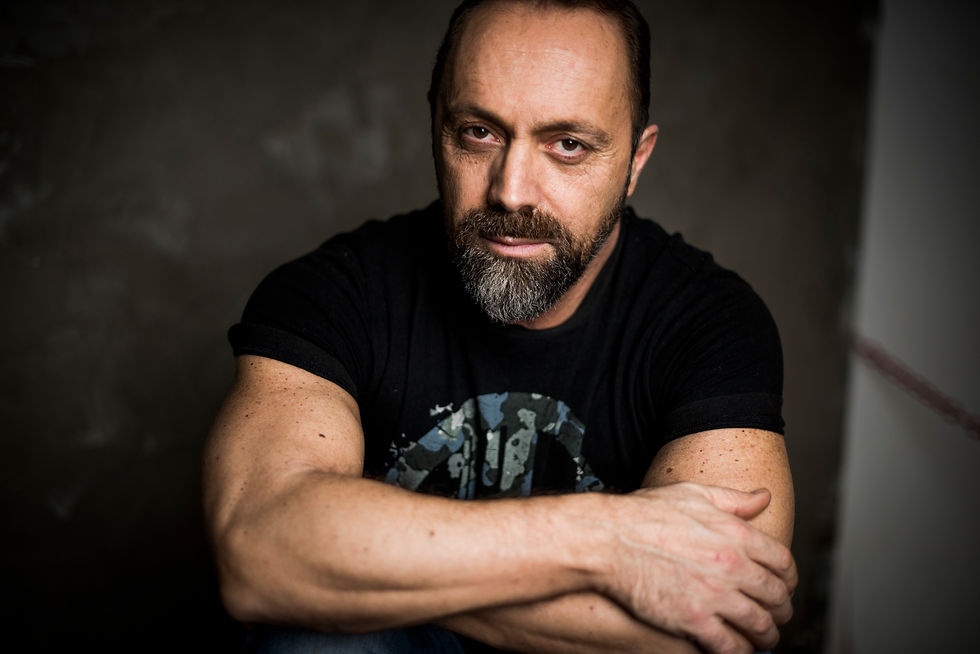
CONTACTS:






























































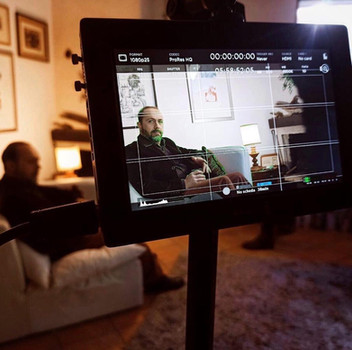



































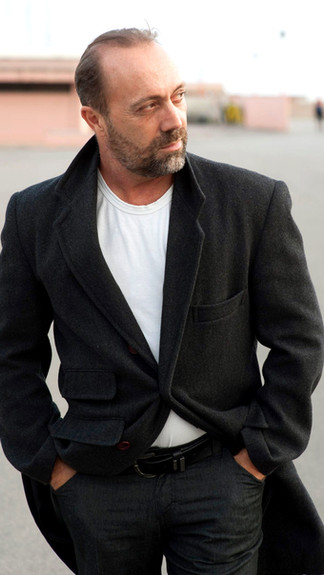
















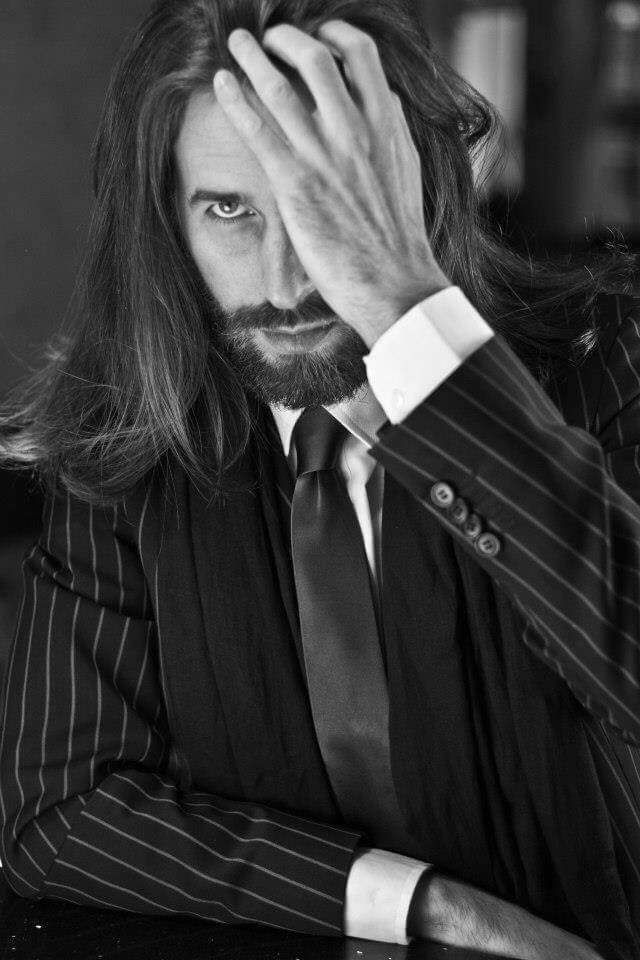
Comments